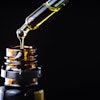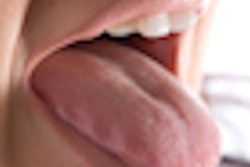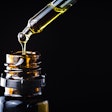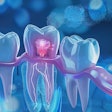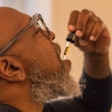A research team in Norway is attempting to develop a better way to treat burning mouth syndrome by creating a carrier that keeps capsaicin, the active ingredient in chili peppers, in the oral cavity for longer.
When capsaicin is applied to the mouth, it is often washed away by saliva and quickly disappears with tongue movements. Therefore, the team is attempting to develop a carrier that has sufficient stickiness so that it adheres to the mucous membranes, according to a press release dated September 18 from the University of Oslo Faculty of Dentistry.
“The goal is to develop a new method for delivering capsaicin to the mouth that provides longer duration and better effectiveness. However, before such a treatment strategy can be implemented, it must be investigated whether the new carrier is safe for the cells in the mouth,” the researchers said in the press release.
Burning mouth syndrome not only causes pain in the mouth and sometimes numbness and taste changes, but the chronic condition mimics other neuropathic pain disorders. The syndrome can be a puzzling condition to diagnose, because pain intensity rarely corresponds to observable disease symptoms. Therefore, burning mouth syndrome patients are at risk of being labeled as anxious or hypochondriacs, and, in some cases, they don’t get appropriate treatment from physicians and dentists.
 Pictured from left to right are Daria Zaytseva-Zotova, Léa Lecomte, Hanna Tiainen, and Preet Bano Singh. Image courtesy of the University of Oslo.
Pictured from left to right are Daria Zaytseva-Zotova, Léa Lecomte, Hanna Tiainen, and Preet Bano Singh. Image courtesy of the University of Oslo.
The criteria for diagnosing the syndrome is pain endurance for a minimum of four to six hours and a strong burning sensation in the mouth, which cannot be explained by a medical or dental condition, Dr. Preet Bano Singh, one of the researchers who works at the university’s Clinic for Smell, Taste, and Oral Pain, said in the press release.
However, Singh and fellow researchers published a study a few years ago in the European Journal of Neuroscience that revealed that those with burning mouth syndrome may experience pain differently. Imaging in these patients showed abnormalities in the part of the brain that deals with pain, suggesting that burning mouth feeling may be associated with nerve tissues in the brain.
Though medications -- including benzodiazepines, gabapentin, tricyclic antidepressants, antipsychotics, antioxidants, and behavioral therapies are used to treat these patients -- none are optimal or particularly effective, Singh said.
In some countries, intraoral capsaicin gel is used to treat burning mouth syndrome.
"It acts as an 'awakener' for specific receptors in the body that transmit pain and temperature signals,” Singh explained.
Since the gel cannot be bought in Norway, Singh and her team began studying ways to effectively deliver the appropriate concentration of capsaicin to the inner lining of the mouth.

